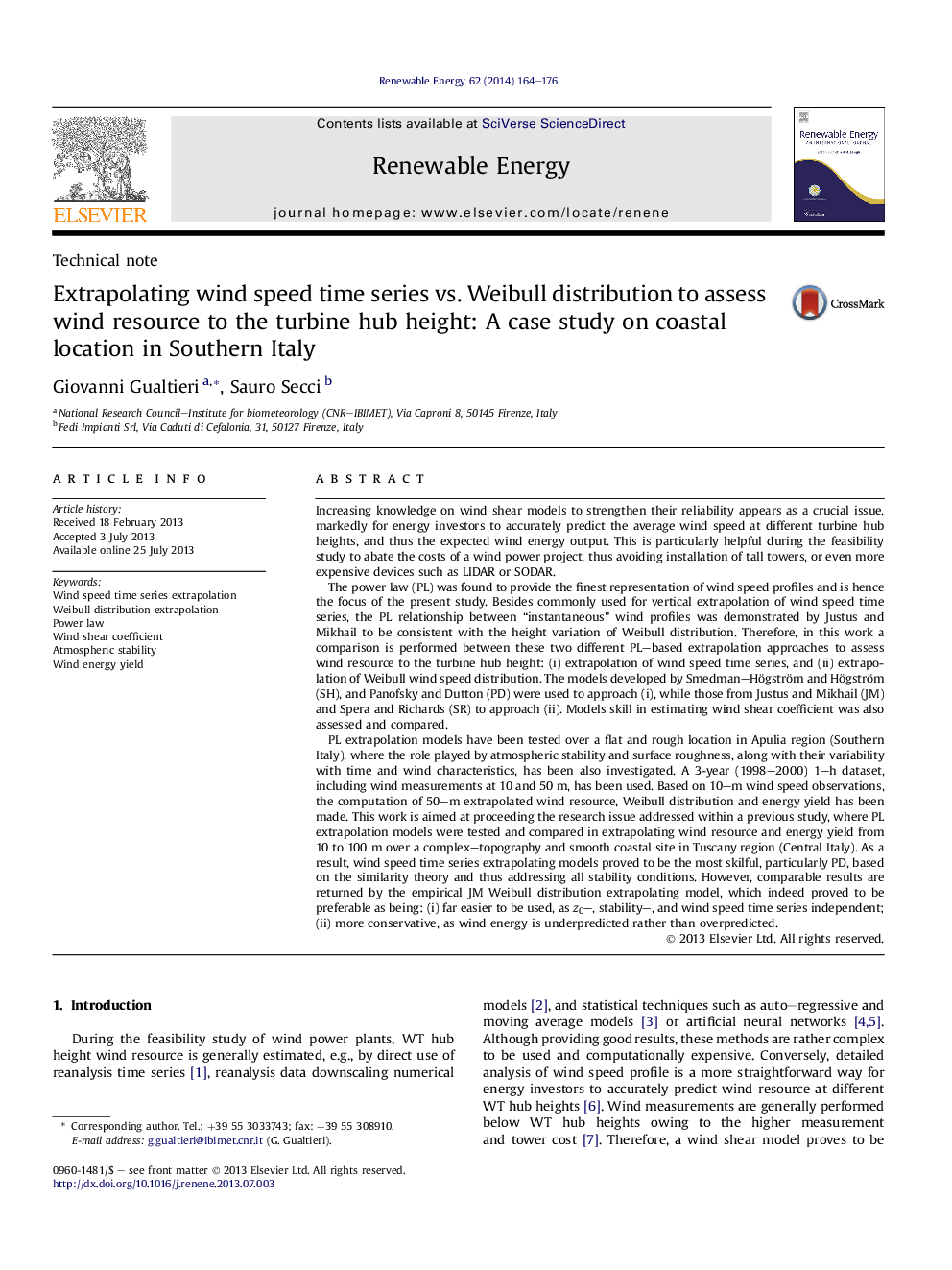| Article ID | Journal | Published Year | Pages | File Type |
|---|---|---|---|---|
| 6768736 | Renewable Energy | 2014 | 13 Pages |
Abstract
PL extrapolation models have been tested over a flat and rough location in Apulia region (Southern Italy), where the role played by atmospheric stability and surface roughness, along with their variability with time and wind characteristics, has been also investigated. A 3-year (1998-2000) 1-h dataset, including wind measurements at 10 and 50Â m, has been used. Based on 10-m wind speed observations, the computation of 50-m extrapolated wind resource, Weibull distribution and energy yield has been made. This work is aimed at proceeding the research issue addressed within a previous study, where PL extrapolation models were tested and compared in extrapolating wind resource and energy yield from 10 to 100Â m over a complex-topography and smooth coastal site in Tuscany region (Central Italy). As a result, wind speed time series extrapolating models proved to be the most skilful, particularly PD, based on the similarity theory and thus addressing all stability conditions. However, comparable results are returned by the empirical JM Weibull distribution extrapolating model, which indeed proved to be preferable as being: (i) far easier to be used, as z0-, stability-, and wind speed time series independent; (ii) more conservative, as wind energy is underpredicted rather than overpredicted.
Related Topics
Physical Sciences and Engineering
Energy
Renewable Energy, Sustainability and the Environment
Authors
Giovanni Gualtieri, Sauro Secci,
